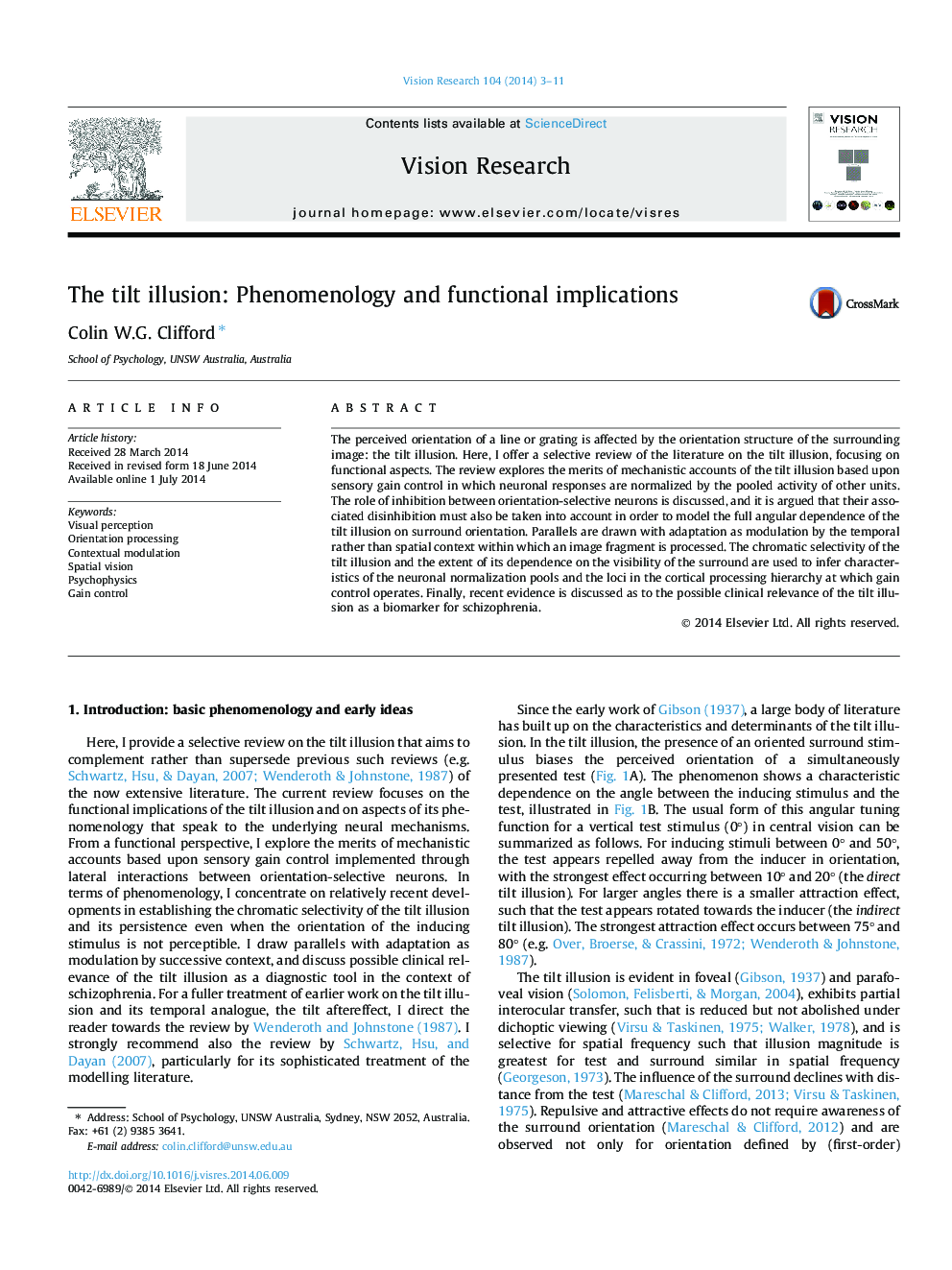| Article ID | Journal | Published Year | Pages | File Type |
|---|---|---|---|---|
| 4033668 | Vision Research | 2014 | 9 Pages |
•Selective review focusing on functional aspects of the tilt illusion.•Explores merits of mechanistic accounts based upon sensory gain control.•Draws parallels with adaptation as modulation by successive context.•Outlines psychoanatomy of the tilt illusion based on recent experimental data.•Discusses possible clinical relevance in context of schizophrenia.
The perceived orientation of a line or grating is affected by the orientation structure of the surrounding image: the tilt illusion. Here, I offer a selective review of the literature on the tilt illusion, focusing on functional aspects. The review explores the merits of mechanistic accounts of the tilt illusion based upon sensory gain control in which neuronal responses are normalized by the pooled activity of other units. The role of inhibition between orientation-selective neurons is discussed, and it is argued that their associated disinhibition must also be taken into account in order to model the full angular dependence of the tilt illusion on surround orientation. Parallels are drawn with adaptation as modulation by the temporal rather than spatial context within which an image fragment is processed. The chromatic selectivity of the tilt illusion and the extent of its dependence on the visibility of the surround are used to infer characteristics of the neuronal normalization pools and the loci in the cortical processing hierarchy at which gain control operates. Finally, recent evidence is discussed as to the possible clinical relevance of the tilt illusion as a biomarker for schizophrenia.
